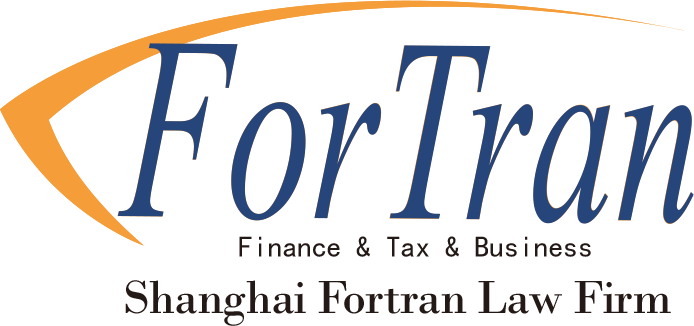This regulatory update covers the Supreme People’s Court’s guidelines on calculating interest for overdue payments in foreign and regional currencies, as well as new administrative measures for the final settlement and payment of consolidated individual income tax.
This regulatory update covers the Supreme People’s Court’s guidelines on calculating interest for overdue payments in foreign and regional currencies, as well as new administrative measures for the final settlement and payment of consolidated individual income tax.
Reply of the Supreme People's Court on the Standard for Calculating Interest on Overdue Payments in Foreign Currencies and Hong Kong, Macao, and Taiwan Currencies (Fa Shi [2025] No.2)
(Adopted at the 1933rd Meeting of the Adjudication Committee of the Supreme People's Court on November 25, 2024, and effective as of February 13,2025)
To the High People's Courts of all provinces, autonomous regions, and municipalities directly under the Central Government; the Military Court of the People's Liberation Army; and the Production and Construction Corps Branch of the Xinjiang Uygur Autonomous Region High People's Court:
Recently, several high people's courts have submitted requests for instructions on determining the applicable interest rates for calculating losses due to overdue payments in foreign currencies and Hong Kong, Macao, and Taiwan currencies. Upon deliberation, the reply is as follows:
Article 1
Where a party claims interest losses due to overdue payments in foreign currencies and the parties have agreed on the applicable interest rate, such an agreement shall be followed. However, if the agreed interest rate exceeds the upper limit prescribed by the governing law applicable to the dispute, the excess portion shall not be upheld.
Article 2
Where the parties have not agreed on an interest rate or the agreement is unclear, the interest rate for overdue payments shall be determined as follows:
For overdue payments in U.S. dollars, the interest rate may be determined based on the average loan rates for periods of up to 3 months, 3 (inclusive) to 6 months, 6 (inclusive) to 12 months, 1 year, and over 1 year, as published in the appendix of the China Monetary Policy Implementation Report regularly released on the official website of the People's Bank of China. The people's court shall determine the applicable rate based on the specific circumstances of the case.
For overdue payments in euros, British pounds, Japanese yen, Australian dollars, Swiss francs, Canadian dollars, New Zealand dollars, and Singapore dollars, the interest rate may be determined by reference to the following benchmark rates, respectively:
- Euro Interbank Offered Rate (EURIBOR) for euros;
- Sterling Overnight Index Average (SONIA) for British pounds;
- Tokyo Overnight Average Rate (TONA) for Japanese yen;
- Bank Bill Swap Rate (BBSW) for Australian dollars;
- Swiss Average Rate Overnight (SARON) for Swiss francs;
- Canadian Overnight Repo Rate Average (CORRA) for Canadian dollars;
- Bank Bill Benchmark Rate (BKBM) for New Zealand dollars; and
- Singapore Overnight Rate Average (SORA) for Singapore dollars.
For other foreign currencies, the interest rate may be determined by reference to the benchmark interest rates published on the official websites of the central banks of the respective countries.
Article 3
For overdue payments in Hong Kong dollars, Macao patacas, and New Taiwan dollars, where the parties have agreed on an interest rate, the provisions of Article 1 of this Reply shall apply. Where no agreement has been made or the agreement is unclear, the interest rate may be determined by reference to the following:
Hong Kong Interbank Offered Rate (HIBOR) for Hong Kong dollars;
Macao Pataca Composite Interest Rate for Macao patacas; and
New Taiwan Dollar Prime Lending Rate for New Taiwan dollars.
Administrative Measures for the Final Settlement and Payment of Consolidated Individual Income Tax (Decree No. 57 of the State Taxation Administration)
Chapter I General Provisions
Article 1
These Measures are formulated to protect taxpayers' legitimate rights and interests and to regulate the final settlement and payment of consolidated individual income tax in accordance with the Individual Income Tax Law of the People's Republic of China and its implementing regulations (collectively referred to as the Individual Income Tax Law), as well as the Law of the People's Republic of China on the Administration of Tax Collection and its implementing rules (collectively referred to as the Tax Collection and Administration Law).
Article 2
Taxpayers who receive consolidated income shall calculate their individual income tax on an annual basis and complete the final settlement and payment in accordance with the law.
Article 3
For the purposes of these Measures, "consolidated income" refers to income derived from wages and salaries, remuneration for labor services, author’s remuneration, and royalties.
The term "final settlement and payment" refers to the process whereby a taxpayer consolidates the total amount of income received from the above sources during a tax year, deducts CNY 60,000 as expenses, as well as special deductions, additional special deductions, other legally determined deductions, and qualified donations to public welfare and charitable causes. The applicable tax rate for consolidated income is then applied, and the corresponding quick deduction amount and tax reduction or exemption amount are deducted to calculate the actual tax payable for the year. After subtracting the prepaid tax amount, the taxpayer determines the tax refund or additional tax payment due for that tax year and completes the tax declaration and settlement with the tax authorities within the statutory time limit. The specific calculation formula is as follows:
Tax Refund or Additional Payment=[(Consolidated Income−60,000−Special Deductions−Additional Special Deductions−Other Legal Deductions−Qualified Public Welfare Donations)×Applicable Tax Rate−Quick Deduction]−Tax Reduction or Exemption−Prepaid Tax
Taxpayers who receive income from overseas sources shall file their tax returns in accordance with the relevant regulations.
Article 4
Taxpayers shall determine the tax year to which their consolidated income belongs based on the actual time of receipt.
If the tax year of an overseas income source does not align with the calendar year, the overseas tax year shall be deemed to correspond to the Chinese tax year in which its last day falls.
Article 5
Taxpayers shall complete the final settlement and payment of consolidated income tax between March 1 and June 30 of the year following the tax year.
Taxpayers without domicile in China who depart the country before the commencement of the final settlement and payment period may complete the process before leaving China.
Article 6
Taxpayers who have prepaid individual income tax on their consolidated income in accordance with the law are exempt from the final settlement and payment if they meet any of the following conditions:
The final settlement results in additional tax payable, but the total annual consolidated income does not exceed the prescribed amount;
The final settlement results in additional tax payable, but the amount due does not exceed the prescribed threshold;
The prepaid tax amount equals the actual tax payable as determined in the final settlement;
The taxpayer qualifies for a tax refund but chooses not to apply for it.
Article 7
Taxpayers who have received consolidated income shall complete the final settlement and payment if they meet any of the following conditions:
The prepaid tax amount exceeds the actual tax payable as determined in the final settlement, and the taxpayer applies for a tax refund;
The prepaid tax amount is less than the actual tax payable as determined in the final settlement, and the taxpayer does not fall under the exemption conditions specified in Article 6;
The taxpayer has underreported or failed to report consolidated income due to incorrect classification of income, failure of a withholding agent to fulfill its tax withholding obligations, or the absence of a withholding agent for the income received.
Chapter II: Preparation for Annual Reconciliation and Reporting of Relevant Information
Article 8
Before conducting the annual reconciliation, taxpayers shall verify the validity of their registered contact information, bank accounts, and other basic information. They shall also review and confirm their comprehensive income, relevant deductions, and prepaid tax amounts via the Individual Income Tax App (hereinafter referred to as the “IIT App”), the website of the Natural Person Electronic Tax Bureau (hereinafter referred to as the “website”), or through their withholding agents.
Article 9
During the annual reconciliation, taxpayers may declare or supplement the following deductions:
A standard deduction of RMB 60,000;
Special deductions, including qualifying contributions to basic pension insurance, basic medical insurance, unemployment insurance, and housing provident funds;
Special additional deductions for eligible expenses, including infant care for children under three years old, children's education, continuing education, major medical expenses, mortgage interest or rental payments, and elderly support;
Other eligible deductions, including enterprise annuities, occupational annuities, commercial health insurance, and personal pensions;
Qualified donations to public welfare and charitable causes.
Taxpayers declaring deductions under items (2) to (5) of this Article shall retain or provide relevant supporting documents as required.
Article 10
Taxpayers who earn both comprehensive income and business income may apply the RMB 60,000 standard deduction, special deductions, special additional deductions, and other legally prescribed deductions to either category of income but shall not claim the same deduction twice.
Article 11
Taxpayers’ declared special additional deductions shall comply with the Individual Income Tax Law and relevant national regulations.
When taxpayers and other eligible filers jointly claim deductions for infant care for children under three years old, children’s education, major medical expenses, mortgage interest or rental payments, or elderly support, they shall confirm the deduction amounts within the allowable limits.
Article 12
Taxpayers intending to benefit from tax reduction, exemption, or other preferential tax policies shall thoroughly understand the relevant regulations and ensure they meet the eligibility criteria before declaring such benefits.
Article 13
If taxpayers dispute the comprehensive income information reported by their withholding agents, they shall first verify the information with the withholding agents. If the information is incorrect and the withholding agent refuses to rectify it, or if the taxpayer's identity has been misused and they are unable to contact the withholding agent, the taxpayer may submit an appeal to the tax authorities via the IIT App, the website, or other designated channels.
Chapter III: Handling and Services for Annual Reconciliation
Article 14
Taxpayers may choose one of the following methods to handle the annual reconciliation:
Self-handle the process;
Have their employer (including entities that withhold and prepay individual income tax on labor remuneration using the cumulative withholding method, hereinafter referred to as "entities") handle the process on their behalf. Upon request from the taxpayer, the unit shall handle the process or provide training and guidance to help the taxpayer complete the declaration and tax refund (or payment). If the unit handles the reconciliation on behalf of the taxpayer, the taxpayer must confirm this arrangement with the unit in writing or electronically. If the taxpayer does not provide confirmation, the unit shall not handle the reconciliation on their behalf;
Entrust a tax-related professional service agency or other entities or individuals to handle the reconciliation. When entrusting a third party, the taxpayer must sign an authorization letter with the entrusted party.
Article 15
Taxpayers are encouraged to handle their annual reconciliation through the IIT App or website but may also choose to mail their documents or visit the tax service center. For those choosing to use the mailing method, the taxpayer must send the declaration forms to the address announced by the tax bureau of the province, autonomous region, directly governed municipality, or specially designated city where the taxpayer’s tax authority is located.
Article 16
Taxpayers must ensure that the information they provide for the reconciliation is truthful, accurate, and complete.
When handled by a unit or an entrusted third party, the taxpayer must truthfully provide all relevant information for the tax year, including comprehensive income, relevant deductions, and any tax incentives enjoyed.
The taxpayer and the unit handling the reconciliation on their behalf must retain all information about comprehensive income, deductions, and tax benefits for a period of five years after the conclusion of the reconciliation period.
Article 17
Entities or entrusted parties that handle the annual reconciliation on behalf of taxpayers must promptly notify the taxpayer of the reconciliation status. If the taxpayer finds any errors in the reconciliation, they may request the unit or entrusted party to correct the declaration or may make the correction themselves.
Article 18
During the reconciliation period, taxpayers who handle the process themselves or entrust a third party to do so must file with the tax authority of their employer. If the taxpayer has two or more employers, they may choose to file with the tax authority of one of them.
If the reconciliation is handled by the employer, the filing will be made to the tax authority of the employer.
If the taxpayer has no employer, they must file with the tax authority of their primary income source, household registration location, or habitual residence. The primary income source refers to the location where the taxpayer’s largest cumulative labor remuneration, manuscript fees, and royalties are paid during the tax year.
After the conclusion of the reconciliation period, the tax authority will determine the tax authority responsible for taxpayers who have not completed the reconciliation.
Except for special provisions, the designated tax authority for a taxpayer’s annual reconciliation cannot be changed once it has been determined.
Article 19
The tax authority, via the IIT App and website, will provide pre-filled items on the declaration forms to assist taxpayers in completing the reconciliation process conveniently.
The tax authority will also provide policy explanations and operational guidance for the reconciliation process and offer tax-related consultations through the IIT App, website, 12366 hotline, and other channels.
For special groups facing difficulties in completing the reconciliation independently, they may apply for personalized convenience services from the tax authority.
Article 20
The tax authority will offer appointment services during the initial stage of the reconciliation. Taxpayers requiring assistance may make an appointment through the IIT App.
The tax authority and entities will provide reminders and guidance in stages, urging taxpayers to complete the reconciliation within the designated time periods.
Article 21
If taxpayers are unable to complete the reconciliation on time and require an extension, they must apply for the extension before the reconciliation period ends. Upon approval by the tax authority, the taxpayer may extend the reconciliation period. However, they must prepay taxes according to the tax amount actually paid in the previous reconciliation period or the tax amount determined by the tax authority, and complete the reconciliation within the approved extension period.
Chapter IV: Tax Refunds (or Supplementary Tax Payments)
Article 22
Taxpayers who complete the annual reconciliation in accordance with the law and find that their actual tax liability is less than the tax paid in advance may apply for a tax refund.
Taxpayers who need to make supplementary tax payments during the annual reconciliation period must pay the taxes before the end of the reconciliation period.
Article 23
Taxpayers with a total income of less than 60,000 yuan and who have already paid individual income tax may apply for a simplified tax refund process via the IIT App or website during the annual reconciliation period.
Taxpayers who meet the criteria for tax refunds and face significant financial burdens will receive priority refund services from the tax authority.
Article 24
After taxpayers submit an application for a tax refund, the tax authority will conduct a review in accordance with the law.
If the tax authority finds that the refund application does not comply with the regulations, it must notify the taxpayer to provide additional information or correct the annual reconciliation declaration. If the taxpayer refuses to provide the necessary information or refuses to correct the declaration, the tax authority will not process the refund.
Article 25
Taxpayers applying for annual reconciliation tax refunds or other tax refunds must first complete the outstanding tax payment for previous years, amend their tax returns, or submit the required documents if they fall under any of the following circumstances:
Failure to complete supplementary tax payments for previous years in accordance with the law.
Failure to amend the tax return or provide supporting documents after being notified by the tax authorities of discrepancies in the annual reconciliation for previous years.
Article 26
Taxpayers applying for a tax refund must provide a qualified bank account in China. After the tax authority reviews the provided information in accordance with the regulations, the refund will be processed.
If the taxpayer fails to provide a valid bank account or provides incorrect account information, they must correct the information and reapply for the refund in accordance with the regulations.
Article 27
Taxpayers making supplementary tax payments for the annual reconciliation can pay through online banking, tax service centers, bank counters, non-bank payment institutions, and other available channels.
For those who choose to handle supplementary tax payments by mail, taxpayers should confirm the reconciliation progress through the IIT App, website, or their tax authority and ensure timely payment of the taxes.
Chapter V: Management Measures and Legal Liabilities
Article 28
After the annual reconciliation period ends, if a taxpayer has failed to file supplementary tax payments or pay the full amount of taxes, the tax authority will recover the unpaid or underpaid taxes in accordance with the law, impose late payment penalties, and mark the taxpayer's individual income tax record. Once the taxpayer corrects their failure to file or pay taxes, the tax authority must promptly remove the mark.
Article 29
If a taxpayer has overpaid or underpaid taxes due to errors in their tax declaration information and voluntarily corrects the error or corrects it after being reminded by the tax authority, the tax authority may waive penalties according to the principle of “no penalty for first-time violations.”
Article 30
If a taxpayer fails to file tax declarations as required, does not pay or underpays taxes, submits false tax declarations, does not cooperate with tax audits, or makes false promises, they will be included in the credit information system. In cases of serious dishonesty, the taxpayer will be subject to restrictions as per relevant regulations.
Article 31
If an entity fails to handle the taxpayer's annual reconciliation on behalf of taxpayers as required or fraudulently uses the a taxpayer's identity to file withholding declarations or annual reconciliations, it shall be dealt with according to relevant regulations and included in the business tax credit evaluation.
If the legal representative of an enterprise, an individual partner of a partnership, or an individual investor in a sole proprietorship fail to complete the annual reconciliation as required by law, such non-compliance shall be jointly included in the business tax credit evaluation.
Article 32
If a trustee assists a taxpayer in submitting false declarations, fraudulently obtaining tax refunds, or engaging in other tax violations related to the annual reconciliation, they will be dealt with in accordance with tax administration laws and regulations governing tax-related professional services, and will be included in the tax-related professional services credit evaluation system.
Article 33
After the annual reconciliation period ends, if a taxpayer has failed to file supplementary tax payments or pay the full amount of taxes, the tax authority will order them to correct the situation within a specified period and send relevant documents. If the taxpayer fails to make the correction within the given timeframe, the tax authority may impose penalties in accordance with tax administration laws. In cases of serious violations, the matter may be publicly exposed.
Article 34
The tax authority, the employer handling the reconciliation on behalf of the taxpayer, and the trustee must keep the taxpayer’s tax-related information confidential in accordance with the law.
Article 35
If the tax authority or its employees violate laws, regulations, or other provisions and infringe upon the legitimate rights of the taxpayer, the taxpayer may file complaints, reports, apply for administrative review, or file an administrative lawsuit in accordance with the law.
Chapter VI: Supplementary Provisions
Article 36
Income derived by taxpayers from property leasing as well as income that is not included in comprehensive income for tax calculation according to regulations, shall not be subject to these measures.
The provisions of these measures do not apply to income derived by non-resident individuals from wages and salaries, service income, remuneration for manuscript fees, or royalties.
Article 37
These measures shall take effect from the date of publication.




